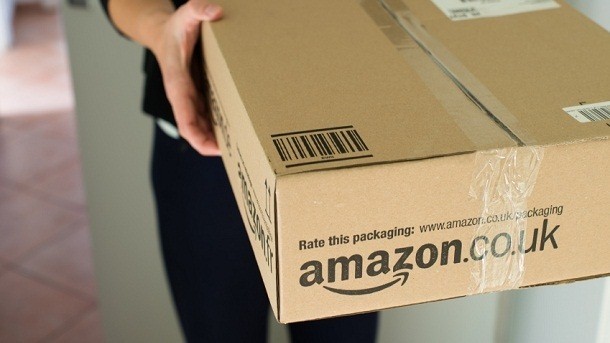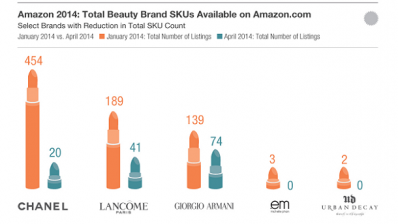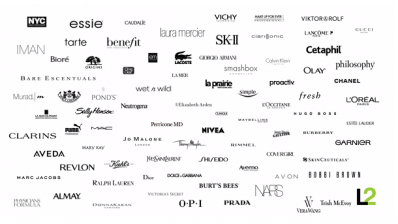Amazon Luxury Beauty Store – not quite plain sailing?

According to Euromonitor figures, since 2010 online sales growth of beauty products has outpaced total industry growth, and this has meant that a number of specialty Beauty retailers have reaped the benefits.
Examples are LVMH‘s Selective Retailing division, which grew 9% in the first half of 2014, driven by Sephora‘s global online expansion, and Ulta expects e-commerce to account for 10% of its total sales and will invest $50 million in e-commerce and other I.T. systems.
A year ago, the uptake in online beauty sales kicked the world’s largest e-tailer Amazon into gear as it launched its Luxury Beauty Store.
However, most prestige brands have kept Amazon at arms-length according to New York-based researcher L2 ThinkTank, who says they are unwilling to subject their brand equity to a platform ‘synonymous with gray-market product and high discounts.’
Challenging
L2 reiterates that there is a lot of potential in utilizing Amazon for beauty brands and this has seen some household names such as L‘Occitane get on board; but there is still difficulty trying to attract 'prestige names, who prefer to stick to retailer sites such as Bloomingdale's or Sephora'.
“Market leaders including LVMH and the Estée Lauder Companies have maintained strict no-engagement policies concerning Amazon, despite the hundreds of thousands of portfolio-brand SKUs available from third-party retailers on the platform,” says L2’s Amazon Beauty report.
The study states that other prestige brands have seemingly traded participation in the Luxury Beauty Store for control of the distribution of their products on the platform.
Burberry, for example, has strategically traded the official distribution of a limited number of its fragrance SKUs in exchange for restricting third-party distribution of other Burberry product lines.
Meanwhile, L‘Oréal Luxe brands Lancôme and Kiehl‘s have replaced brand listings with affiliated link advertisements, which drive Amazon consumers back to brand sites for purchase.
Hope and opportunity
It is not all doom and gloom however, as L2 suggests that Amazon may have more luck with mass brands, the majority of which already use the platform as an official distribution channel.
Three-quarters of Beauty and Hair Care & Color brands are eligible for Amazon‘s Subscribe & Save program, which allows consumers to regularly purchase eligible items in return for free shipping and discounts.
“Amazon’s recent investments in grocery and CPG e-commerce— Amazon Fresh and Prime Pantry—could have enormous implications for mass Beauty and Hair Care sales,” says L2.
“Over the course of the next year, 40 million Americans will place their first online grocery orders, each ‘basket’ an opportunity to include everyday consumer items such as shampoo or mascara.”








